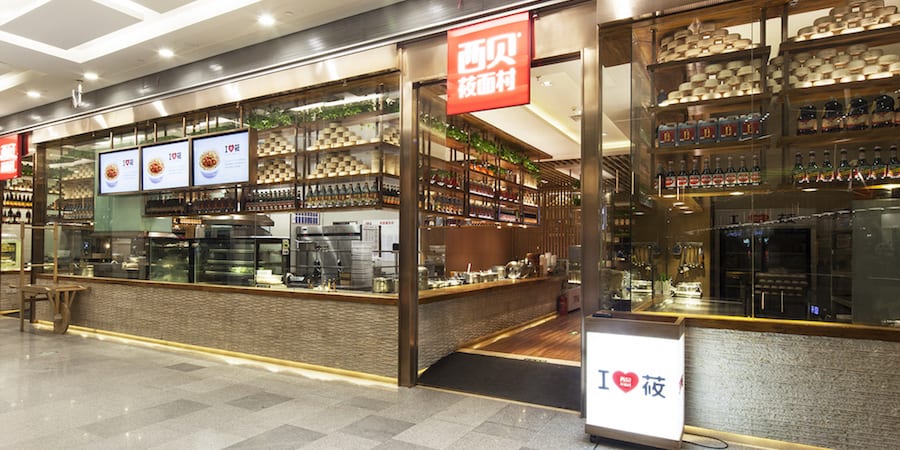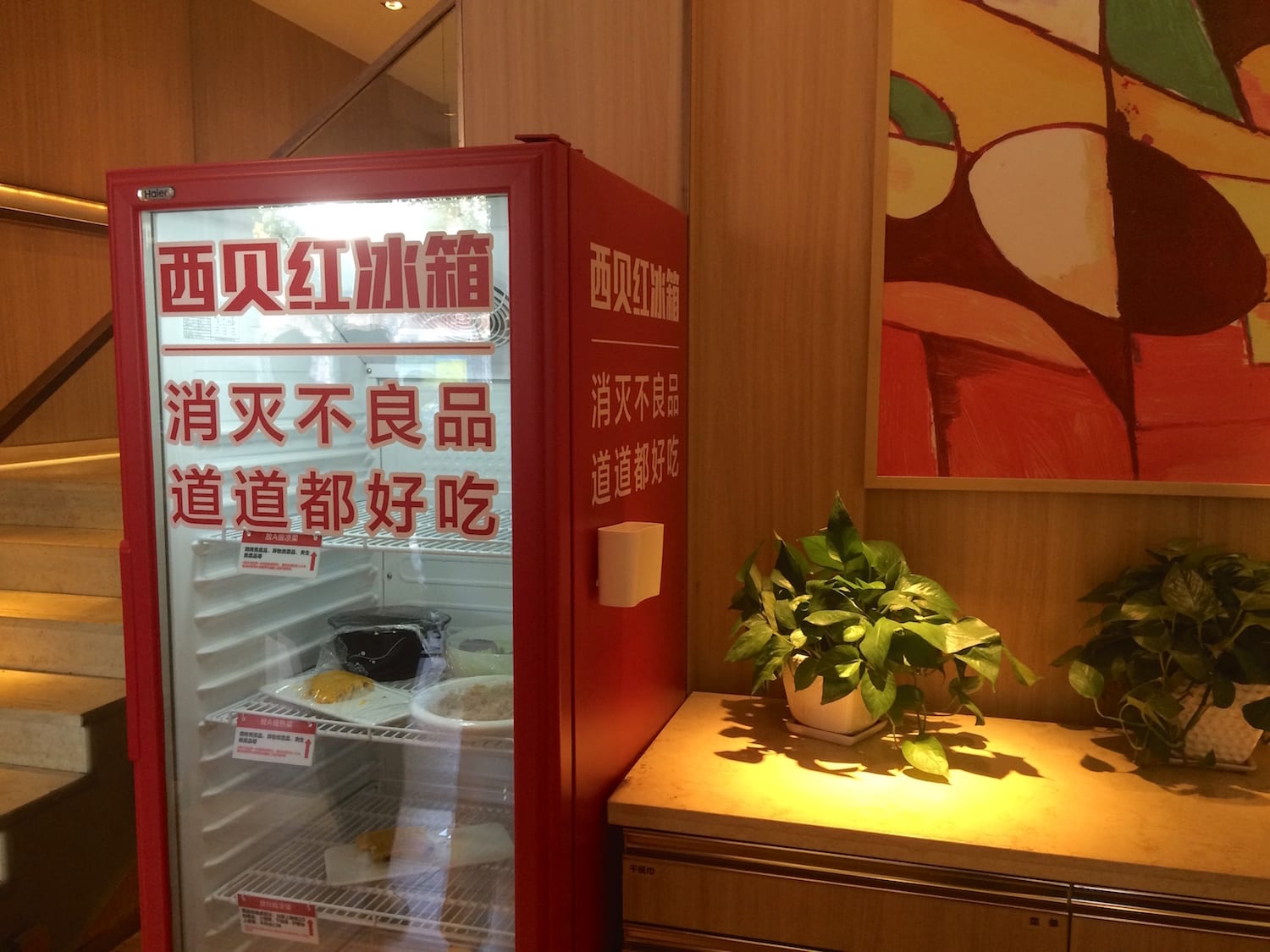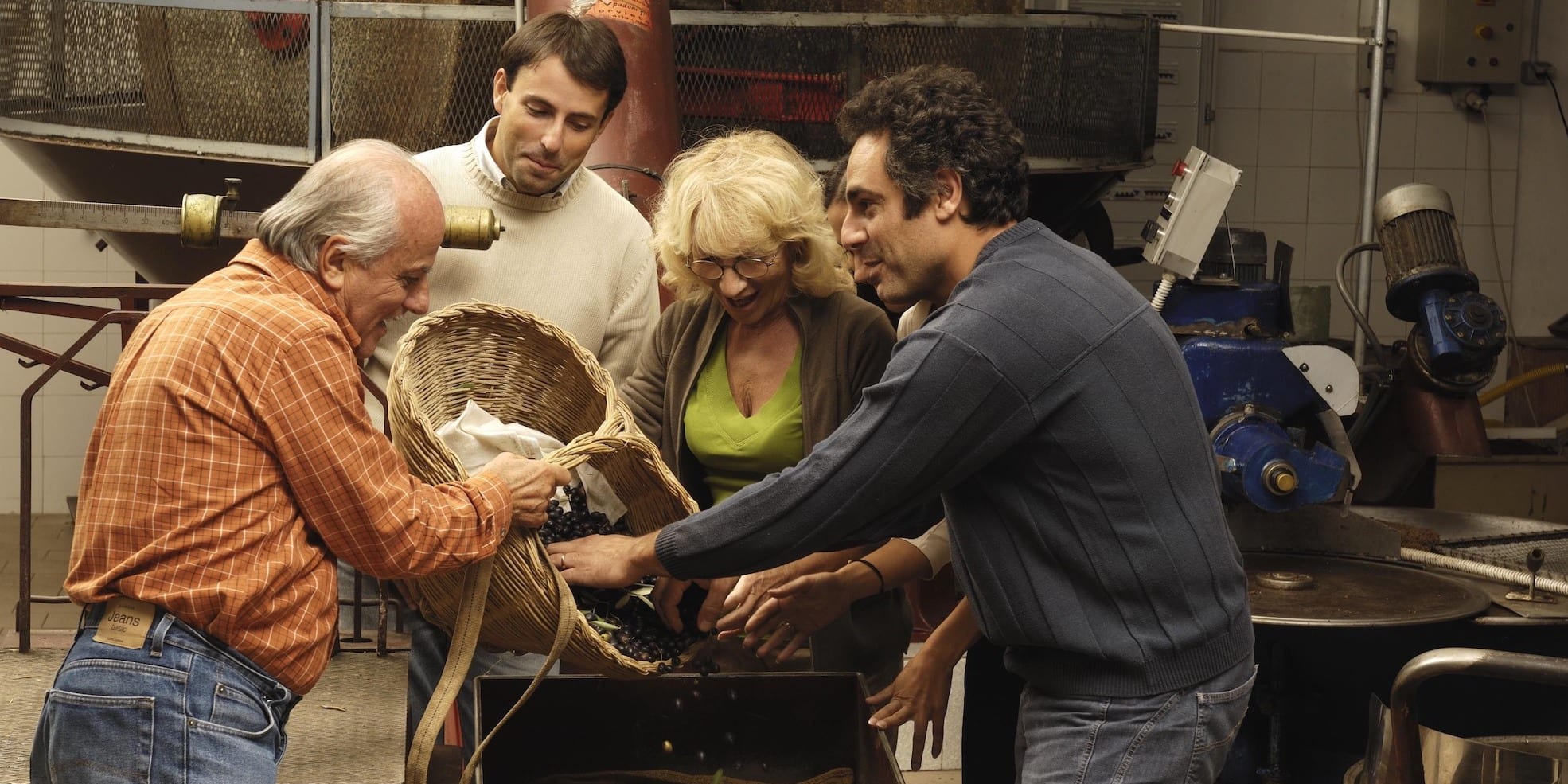
Chinese restaurant chain Xibei adopts the lean methodology
CASE STUDY – An entire restaurant chain going lean is not something you see every day. Coming all the way from China, Xibei's story of cultural change will inspire you to never forget the fundamentals of lean, from standardization to quality.
Words: Jeff Zhou, Vice President, Lean Enterprise China and associate professor of Industrial Engineering at Tongji University
While on a business trip to Shanghai, David, the lean manager of a manufacturing firm in nearby Suzhou, and his colleague were looking for somewhere to eat in the Jinqiao area.
They came across a place called Xibei, and decided to give it a try. The place was busy and people appeared to be having a good time. There were large groups of friends and lots of families.
In Mandarin, Xi means "west" and Bei means "north," and that's what the restaurant offered: traditional cuisine from the country's Northwest (in particular the inner Mongolia region), famous for its lamb-based dishes and its use of wild grains.
After a 15-minute wait, David and his colleague were shown to their table. Following the waiter's recommendation, they ordered lamb and vegetables. When they were done ordering, the waiter placed his hand on his chest, and promised that the food the two men would be served would be freshly made and would not contain any monosodium glutamate, a flavor enhancer widely used in China and considered by many as harmful.
Much to David's surprise, the waiter proceeded to place a sand clock on the table, explaining that it would take 25 minutes for the sand to trickle down completely. "If your food is not served within this timespan, we'll give you two bottles of yogurt as compensation for the late delivery," he concluded before leaving to tend to another table.
It didn't take David long to realize that the sand clock was a smart and very lean way to measure (and visualize) the speed of delivery. He started to comment with his colleague that no restaurant client likes to wait long for food and that no restaurant wants unhappy customers. "Plus, faster service through shorter lead-times means more customers and therefore more money, with the same floor space and the same number of tables," he thought. "It's a win-win situation, really."

A LEAN RESTAURANT, YOU SAID?
Xibei is a popular chain of restaurants with more than 100 locations in several Chinese cities. Its main clientele is China's booming middle-class.
The organization, led by owner and CEO Mr Jia, is one of the first to make a real effort to use lean principles and practices in the restaurant sector in China, where the methodology is still very much seen as something that works only in manufacturing.
In 2009, Xibei launched a pilot lean project in one of its restaurants in China's capital city, Beijing. Some results were achieved, but unfortunately they could not be sustained.
Two years later the lean journey resumed. This time the organization chose to try lean in the Shanghai Jinqiao restaurant mentioned above and in another location in Beijing. The effort was much more systematic from the outset, focusing on important metrics related to efficiency, such as income per square meter and income per employee. Additionally, a number of tools were introduced (including the sand clock) which proved very powerful.

The lean team completed a study of all the main workstations, both in the back (the kitchen area) and in the front (the dining area), which resulted in the introduction of standards for a number of tasks. These included: preparing a dish (for chefs); and cleaning a table and serving a meal (for waiters). They even standardized the way orders are taken, which proved particularly tricky because of the interactive nature of the process.
At first, standards felt somewhat rough, but they soon proved to be a good reference point for training workers and for measuring general efficiency.
The onboarding procedure to train new hires was particularly successful. It previously took between three and six months to turn a new hire into fully skilled member of the team, while under the new system waiter training was completed in maximum six weeks. It now follows a show-practice-certify-share model: the trainer shows the trainee how to perform a set of tasks at a specific workstation and asks him or her to practice; when the trainee is qualified to perform the tasks (at a good speed and at the right quality level), he or she moves to the next workstation; when all the workstations in the restaurant have been covered, the trainee is a fully skilled waiter/waitress and can even teach new hires.
In the past four years, thanks to the implementation of lean thinking, Xibei has achieved many results across its network of restaurants. The eastern China region (of which the Jinqiao restaurant is part) appeared to be the most determined to extend the reach of the pilot projects to all locations.
The regional management team watched the Shanghai Jinqiao location very closely. Not only does it act as a very vocal advocate (not to mention model) for the widespread application of lean within Xibei, but it also achieved results that have proved very appealing to the rest of business, especially the 30% reduction in labor. The extra people who are no longer needed in one restaurant are immediately transferred to a different one (Xibei is growing at a very fast rate, with dozens of new stores opening this year). Furthermore, because they are highly skilled, these professionals quickly become the core team for the newly opened locations.
A NEW GENERATION OF RESTAURANTS
As the Xibei lean team dug deeper into the improvement opportunities, they encountered many difficulties. Figuring out the right layout for the dining area, in which there are normally between 50 and 100 tables of many different sizes, was particularly tricky. In the Shanghai Jinqiao restaurant, for example, big tables were closer to the kitchen (even though they usually have lower table-turns and require less dish transportation because people in large groups tend to spend more time at the table, even after they are done with their meal), while smaller tables were further away from it (despite the fact that they normally require more transportation).
It soon became clear that lean principles would have to be carefully built into the blueprint for the new "perfect" restaurant configuration.

At the same time, Xibei had opened a much smaller restaurant in a Beijing office building (although the chain attracts thousands of customers, the location was rather small and in China there are also restrictions for opening restaurants in office buildings).
Mr Jia's mind was also on store layout. From his point of view, Xibei was seeing two restaurant models. First, the very large restaurants (which opened in the first few years) built on the side of the busy streets; and more recently, the small eateries located in offices buildings.
The former (large restaurants) appeared to present many disadvantages. Customers often experienced lengthy waits, and the food had to travel Great Wall of China-like distances to reach the tables. In the Chinese restaurant industry, there is a popular saying: "One warm dish is worth three delicacies" and Xibei soon realized the large restaurant model was not a good option for them.
Perhaps, Mr. Jia thought, the new idea of opening smaller restaurants in office buildings would prove a success. However, before committing to the new model layout, the company decided to formally weigh up pros and cons and to study the situation and the options. It then decided to formally launch a project to develop new store models.
A few months later, after much designing, experimenting and redesigning, the model of a "third generation" Xibei restaurant was ready. It built on the idea of the smaller restaurant, adding a few critical characteristics:
- The kitchen would be divided in modules – functional units for frying, boiling, cooking cold foods and oatmeal – to make the layout easy to reconfigure;
- The restaurant would turn to non-gas cooking, to simply the installation process;
- An open kitchen to make the restaurant more customer-friendly and help people trust the quality of the food;
- No table would be far from the kitchen.
- Critically, the menu would be limited to maximum 40 dishes, a significant reduction compared to the typical Chinese restaurant (where finding 200 dishes listed is not uncommon).
The first "3rd generation" restaurant opened in Beijing in early 2014. It quickly became a great success. Many other locations with the same characteristics were opened starting at the end of 2014 to further test the model. They were all successful, averaging a 30% increase in net profit compared to 2nd generation restaurants and a 37% improvement of sales per square meter.
Not surprisingly, most of the 70 new restaurants opening this year are 3rd generation.

QUALITY FOOD TO SUCCEED
Xibei's idea of customer value has always been tasty food at affordable prices.
The first element to ensure tasty food is, of course, high-quality raw materials. The Xibei sourcing team always looks to buy the best possible ingredients – from meat to vegetables and eggs. The company is one of the few brands in China to source a premium variety of lamb only available (in very small volumes) in the inner Mongolian grasslands.
The second element is method. Xibei puts a great deal of effort into R&D. Its master chefs in Beijing work hard to both use traditional cooking methods and improve them, and to develop new ones.
The company has even been invited by UNESCO to demonstrate the art of Chinese cooking. Not only has this contributed to making Xibei popular and to boost confidence within the workforce, but it has also made the organization more open to learning about cooking in other countries. They have invited several chefs from all over the world to visit and develop new dishes together (some Michelin-star chefs have also worked for the company).

Xibei has invested a lot of time and energy in standardizing cooking procedures so that it can train chefs in hundreds of restaurants to prepare perfect dishes. Both old and new chefs are routinely asked to participate in training at the Xibei University.
The effort is paying off, with review websites awarding very high scores to Xibei for the taste of its food (the score soars to over 9 out of 10 in the Beijing and Shanghai regions). But Mr Jia appears to be slightly less positive about the taste of the food, telling his management team that he would personally give it just over 6, as in "a pass."
For those who know Mr Jia, this will come as no surprise. The man has high expectations for the future of the restaurant chain, and is planning to take the Xibei brand to many of the world's major cities. It is natural that he won't be easy to please.
Mr Jia knows his people are working hard to prepare great food, and he is determined to ensure Xibei is known for the taste of his dishes. At an internal meeting, he once said: "No taste, no money. Any dishes that are not tasty enough can be returned or exchanged." He also knows, however, the problems never disappear.
THE RED REFRIGERATOR
Yes, problems never disappear and not all dishes are tasty enough. About 2% of the meals served across Xibei are returned or exchanged. Upon handing the bill, Xibei waiters and waitresses ask customers whether they are satisfied or not with the taste of the food they ate. If they aren't, the cost of the dish will be deducted from the bill.
What happens next? Waiters record the issue in a form and mark the dish as "waste." Xibei takes his promise "No taste, no money" very seriously.
When he spoke at the Lean Summit organized by Lean Enterprise China in Shanghai earlier this year, Mr Jia said that a lot of his inspiration on what lean improvements to recommend at Xibei came from other speakers that presented at the event. In particular, he was struck by the concept of the andon cord, as explained by John Shook, CEO of the Lean Enterprise Institute, and by what Freddy Ballé, co-author of The Gold Mine trilogy, said about red bins, used to visualize quality problems.
Mr Jia thought that these would really help to tackle the dish return/exchange problem.
So any dishes returned or exchanged are now placed in the restaurant version of a red bin, a red refrigerator (food rots quickly), to visualize the problem. Because the team is normally very busy serving customers and returned food is a fairly rare occurrence, it makes sense to come back to whatever issues with "tasteless food" were recorded at the end of the evening.

What's critical, however, is that the management team joins the meeting to help find the reason why the customer was not satisfied and try to make improvements. Mr Jia emphasized that Xibei management would "focus on problems, not the people creating them." This means there is no disciplinary consequence for the chefs who made a dish a customer complained about.
The red refrigerator mechanism was implemented in June, as an experiment. There were then a number of pilots, followed by a formal analysis of the lessons learned. This resulted in a more formal and easy-to-execute standardized procedure for dealing with returned or exchanged dishes. Now that the team in each restaurnt understands the real purpose of the red refrigerator, they are more willing to expose potential quality problems. In some Xibei restaurants, the team even considers dishes of which the customer ate less than one third as a quality problem: they want to find out the reason why people didn't want that food.
It is clear that a new culture is being developed.
THE AUTHOR

Read more


WOMACK’S YOKOTEN – The author discusses the benefits that the many family businesses making up our economies can harness from embracing lean management.


FEATURE – Attracting, developing and retaining talent has become a pressing issue in the corporate world, as new generations show skepticism towards traditional management. Lean is the answer, say the authors.


FEATURE – To really embrace lean thinking means to ensure the bureaucratic structures in our organizations enable our people to excel, rather than constrain their creativity.


CASE STUDY – The Finnish Broadcasting Company has been leveraging lean thinking to scale up its agile work. In the process, it has developed a greater understanding of customer value.

